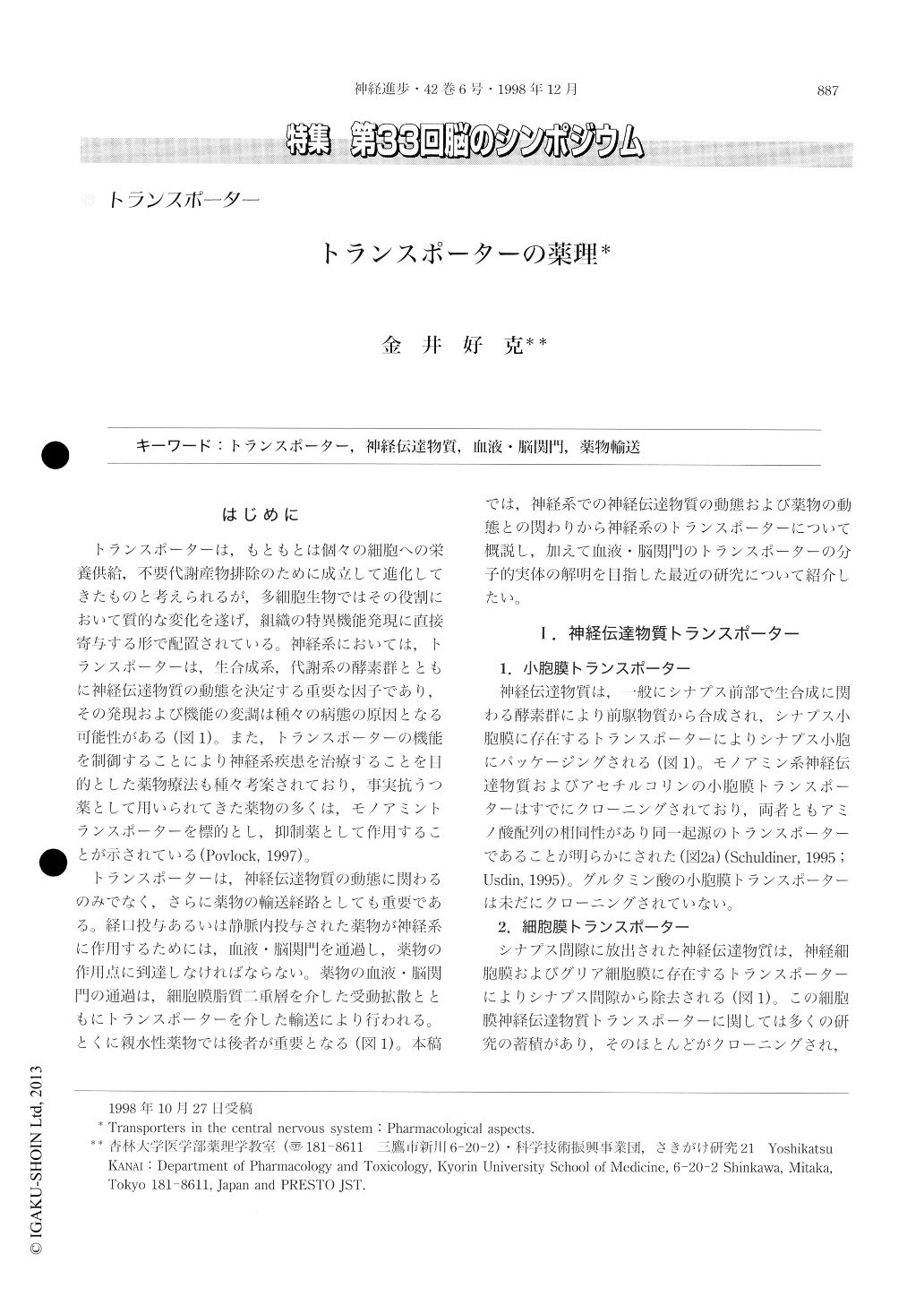Japanese
English
- 有料閲覧
- Abstract 文献概要
- 1ページ目 Look Inside
はじめに
トランスポーターは,もともとは個々の細胞への栄養供給,不要代謝産物排除のために成立して進化してきたものと考えられるが,多細胞生物ではその役割において質的な変化を遂げ,組織の特異機能発現に直接寄与する形で配置されている。神経系においては,トランスポーターは,生合成系,代謝系の酵素群とともに神経伝達物質の動態を決定する重要な因子であり,その発現および機能の変調は種々の病態の原因となる可能性がある(図1)。また,トランスポーターの機能を制御することにより神経系疾患を治療することを目的とした薬物療法も種々考案されており,事実抗うつ薬として用いられてきた薬物の多くは,モノアミントランスポーターを標的とし,抑制薬として作用することが示されている(Povlock, 1997)。
In the central nervous system, transporters situated in the plasma membrane and vesicular membrane play critical roles not only for cellular nutrition but also for maintaining brain-specific functions. Plasma membrane neurotransmitter transporters are responsible for the removal of released neurotransmitters from the synaptic cleft and extracellular space to terminate synaptic transmission and to protect neurons from the toxicity of excitatory neurotransmitters. Vesicular neurotransmitter transporters function for packaging neurotransmitters in pre-synaptic vesicles.

Copyright © 1998, Igaku-Shoin Ltd. All rights reserved.


